What If? (38 page)
Authors: Randall Munroe

Th
e dynamics of really huge rocky planets aren’t often analyzed, since there’s no obvious way that they could form; anything that large will have enough gravity to gather hydrogen and helium during planet formation and become a gas giant.
At some point, our growing Earth would reach the point where adding more mass causes it to contract, rather than expand. After this point, it would collapse
into something like a sputtering white dwarf or neutron star, and then
—
if its mass kept increasing
—
eventually become a black hole.
But before it gets that far . . .
t = 300 years
It’s a shame humans wouldn’t live this long, because at this point, something really neat would happen.
As the Earth grows, the Moon would, like all our satellites, gradually spiral inward. After several
centuries, it would be close enough to the swollen Earth that the tidal forces between Earth and the Moon would be stronger than the gravitational forces holding the Moon together.
When the Moon passed this boundary
—
called the Roche limit
—
it would gradually break apart,
9
and Earth would, for a short time, have rings.
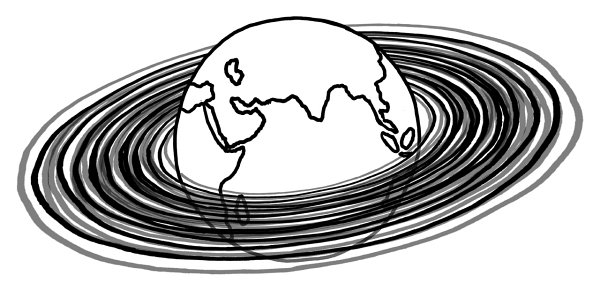
If you liked it, then you should have moved a mass inside its Roche limit.
- 1
Th
e smoking gun that confirmed the theory of plate tectonics was the discovery of sea-floor spreading.
Th
e way sea-floor spreading and magnetic pole reversal neatly confirmed each other is one of my favorite examples of scientific discovery at work.
- 2
It turns out it’s kind of dumb.
- 3
As it turns out, the ocean is expanding, since it’s getting warmer.
Th
is is (currently) the main way global warming
is
raising the sea level.
- 4
Mass is proportional to radius cubed, and gravity is proportional to mass times inverse square of radius, so radius
3
/ radius
2
= radius.
- 5
Just what you want in a skyscraper.
- 6
Although I wouldn’t trust the elevators.
- 7
Over decades, the force of gravity would grow slightly faster than you’d expect, since the material in the Earth would compress under its own weight.
Th
e pressure inside planets is roughly proportional to the square of their surface area, so the Earth’s core
would be squeezed tightly.
http://cseligman.com/text/planets/internalpressure.htm
.
- 8
Although some radioactive elements, like uranium, are heavy, they get squeezed out of the lower layers because their atoms don’t mesh well with the rock lattices at those depths. For more, see this chapter:
http://igppweb.ucsd.edu/~guy/sio103/chap3.pdf
and this article:
http://world-nuclear.org/info/Nuclear-Fuel-Cycle/Uranium-Resources/
Th
e-Cosmic-Origins-of-Uranium/#.UlxuGmRDJf4
.
- 9
Sorry, Moon!
Weightless Arrow
Q.
Assuming a zero-gravity environment with an atmosphere identical to Earth’s, how long would it take the friction of air to stop an arrow fired from a bow? Would it eventually come to a standstill and hover in midair?
—Mark Estano
A.
It’s happened to all
of us. You’re in the belly of a vast space station and you’re trying to shoot someone with a bow and arrow.
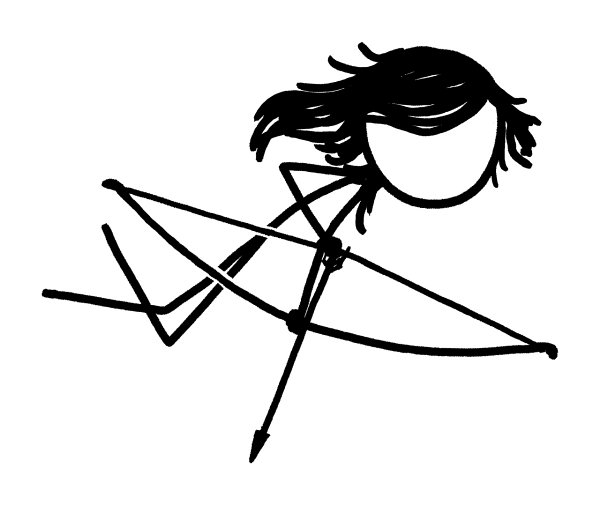
Compared to a normal physics problem, this scenario is backward. Usually, you consider gravity and neglect air resistance, not the other way around.
1
As you’d expect, air resistance would slow down an arrow, and eventually it would stop . . . after flying very, very far. Fortunately, for most of that flight, it wouldn’t be much of a danger to anyone.
Let’s go over what
would happen in more detail.
Say you fire the arrow at 85 meters per second.
Th
at’s about twice the speed of a major-league fastball, and a little below the 100 m/s speed of arrows from high-end compound bows.
Th
e arrow would slow down quickly. Air resistance is proportional to speed squared, which means that when it’s going fast, the arrow would experience a lot of drag.
After ten
seconds of flight, the arrow would have traveled 400 meters, and its speed would have dropped from 85 m/s to 25 m/s; 25 m/s is about how fast a normal person could
throw
an arrow.
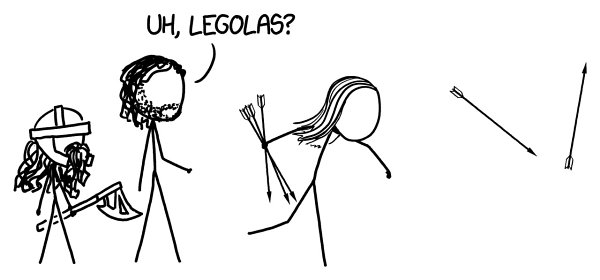
At that speed, the arrow would be a lot less dangerous.
We know from hunters that small differences in arrow speed make big differences in the size of the animal it can kill. A 25-gram arrow moving at 100 m/s could be used to hunt elk and black bears. At 70 m/s, it might be too slow to kill a deer. Or, in our case, a space deer.
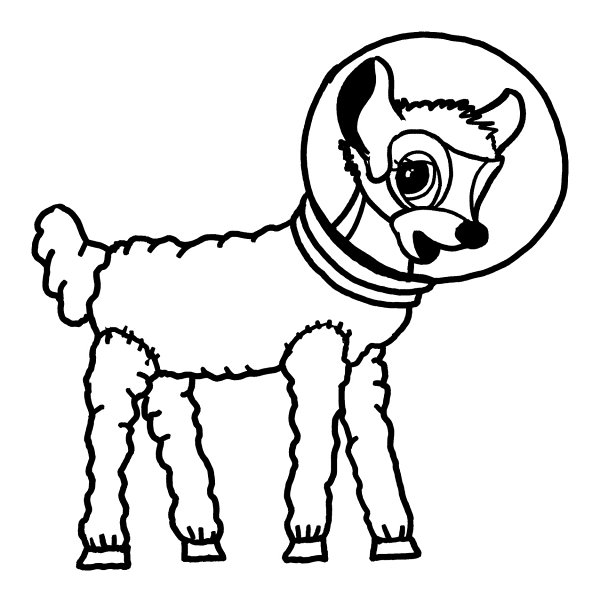
Once the arrow leaves that range, it’s no longer particularly dangerous . . . but it’s not even close to stopping.
After five minutes, the arrow would have flown about a mile, and it would have slowed to roughly walking speed. At that speed, it would experience very little drag; it would just cruise along, slowing down very gradually.
At this point, it would have gone
much farther than any Earth arrow can go. High-end bows can shoot an arrow a distance of a couple hundred meters over flat ground, but the world record for a hand bow-and-arrow shot is just over a kilometer.
Th
is record was set in 1987 by archer Don Brown. Brown set his record by firing slender metal rods from a terrifying contraption that only vaguely resembled a traditional bow.
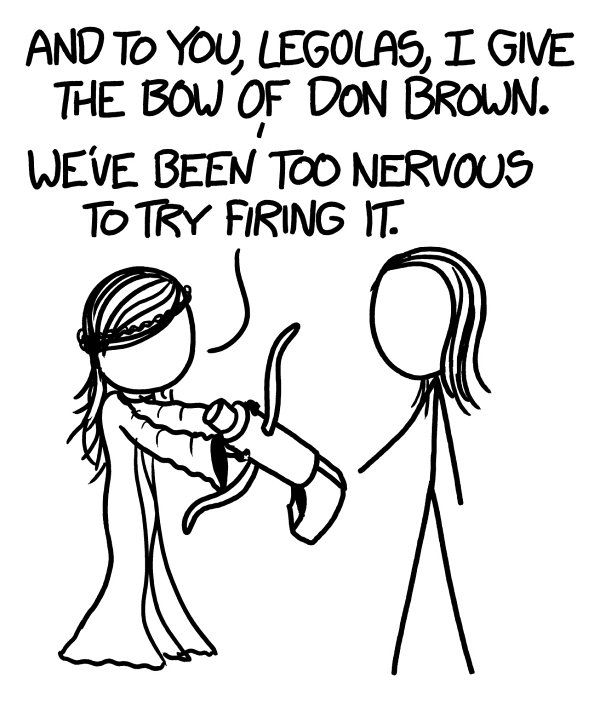
As the minutes stretch into hours and the arrow slows down more and more, the airflow changes.
Air has very little viscosity.
Th
at is, it’s not gooey.
Th
at means things flying through the air experience drag because of the momentum of the air they’re shoving out of the way
—
not from cohesion between the air molecules. It’s more like pushing your hand through a bathtub full
of water than a bathtub full of honey.
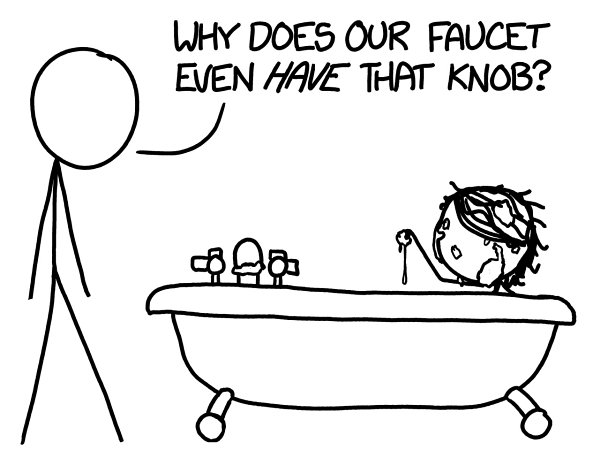
After a few hours, the arrow would be moving so slowly that it would be barely visible. At this point, assuming the air is relatively still, the air would start acting like honey instead of water. And the arrow would, very gradually, come to a stop.
Th
e exact range would depend heavily on the precise design of the arrow. Small differences in an arrow’s shape can dramatically
change the nature of the airflow over it at low speeds. But at minimum, it would probably fly several kilometers, and could conceivably go as far as 5 or 10.
Here’s the problem: Currently, the only sustained zero-g environment with an Earth-like atmosphere is the International Space Station. And the largest ISS module, Kibo, is only 10 meters long.
Th
is means that if you actually performed
this experiment, the arrow would fly no more than 10 meters.
Th
en, it would either come to a stop . . . or
really
ruin someone’s day.
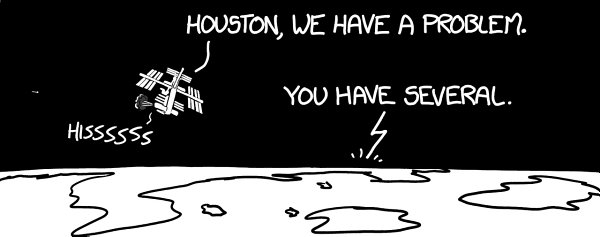
- 1
Also, you don’t usually shoot astronauts with a bow and arrow
—
at least not for an undergraduate degree.
